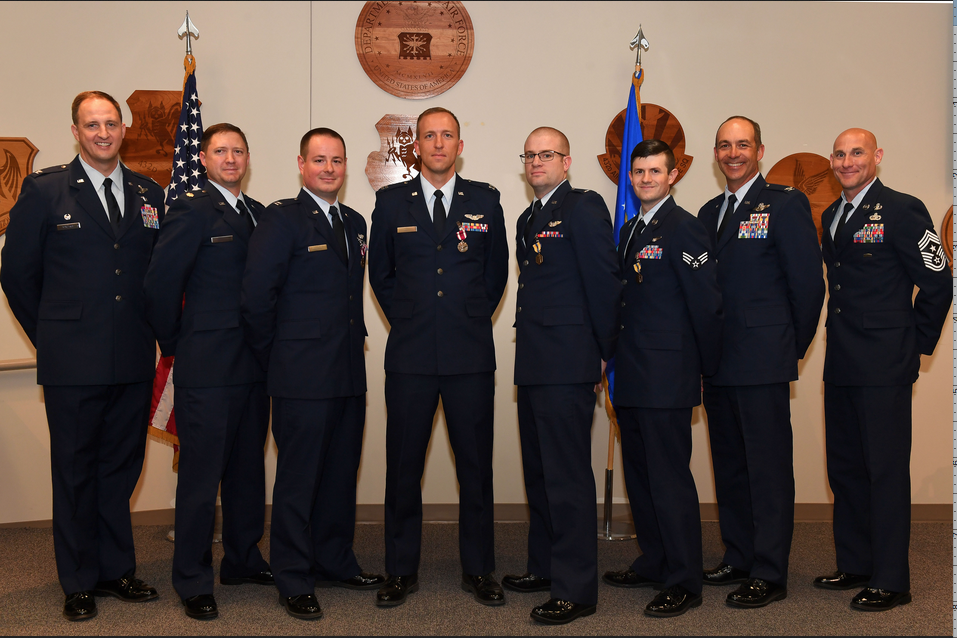
From left, Col. Julian C. Cheater, 432nd Wing/432nd Air Expeditionary Wing commander, retired Maj. "Asa," Capt. "Evan,"Capt. "Abrham," 1st Lt. "Eric," and SrA "Jason," pose for a photo July 11 at Creech AFB, Nev. Air Force photo by SrA James Thompson
The Air Force on Wednesday presented its first remote “R” devices at Creech AFB, Nev., to 432nd Wing/432nd Air Expeditionary Wing aircrews.
The award recognized the impact remotely piloted aircraft aircrews have on the battlefield. Col. Julian C. Cheater, 432nd WG/432nd AEW commander, presented Meritorious Service Medals and Air Force Commendation Medals bearing the device, authorized in 2016 as an award for hands-on employment of a weapons system that directly and immediately affects military operations without exposing the individual to personal hostile action.
According to the Air Force release, the actions of the recipients, whose full names were not given, eliminated threats and saved the lives of US and coalition ground forces.
The recipients included retired Maj. “Asa,” a 732nd Operations Group MQ-9 pilot and mission commander, and Capt., then 2nd Lt., “Evan,” 732nd OG MQ-9 Reaper pilot for February 2016 actions. The crew, the release said, supported “dominant and persistent attack and reconnaissance” during a 74-day period to “identify a high-value target and known terrorist.”
The crew adapted to the situation as “the target traveled through densely populated areas at a high speed,” according to the Air Force. Evan’s crew provided information and coordination with other aircraft and used laser guidance for a strike, “successfully removing the theater’s No. 2 high-value individual from the battlefield.”
In another of the instances, 1st Lt., then 2nd Lt., “Eric,” 432nd Operations Group MQ-9 pilot; and SrA “Jason,” 432nd OG MQ-9 sensor operator were recognized for support actions during a contingency effort.
In that instance the crew found a truck with a large-caliber machine gun moving toward friendly forces. The vehicle fired on the friendly forces for a short period before returning to a garage, a maneuver it repeated a number of times, the release states.
There was a group of civilians near the vehicle firing on friendly forces. The crew waited until the vehicle was back at the garage to protect civilians before eliminating the vehicle and enemy combatants.
“In this particular situation, we were able to quickly assess that the enemy was not yet inflicting effective fire on friendly forces which allowed us to completely prepare for the strike,” Eric said.
Finally, while Capt. ”Abrham,” 432nd Operations Group MQ-9 pilot and his aircrew were monitoring a hostile area, weather forced manned aircraft from the area. Abrham stayed on station and, after several hours, saw enemy personnel begin to fire on friendly forces.
Under increasingly adverse conditions, he used four Hellfire missiles to knock out two vehicles and a mortar system before bringing his aircraft back despite weather conditions, the release states.